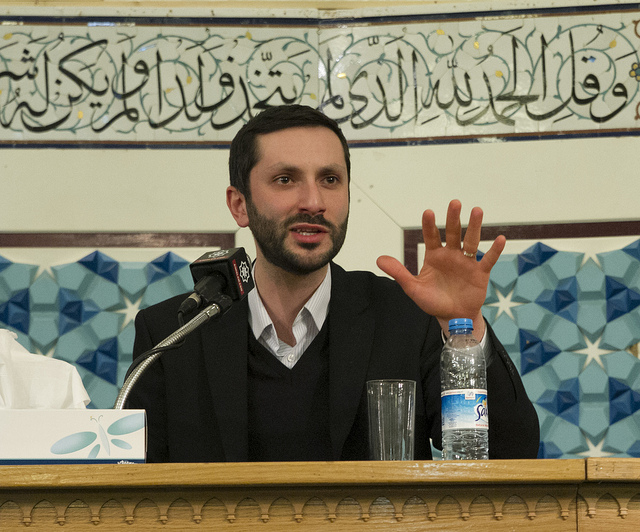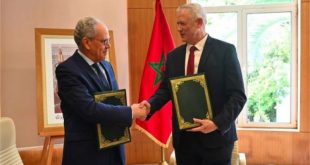Dr. Hassen Al-Sader, Director of Al-Shaheed Al-Sadr Office in London
Everywhere around the Muslim nation, especially in the Middle East, and probably starting from Iraq: sectarianism has been eating its way through the nation.
Shedding blood, increasing tension, fragmenting society and even breaking the family unit, sectarianism has done a big damage. Overall, weakening all nations, and shielding the aggressive Zionists as they continue their oppression in Palestine.
We know the agents who spread sectarianism: wahabies/Salafis, who target their efforts not to help the oppressed people of Palestine, but towards Sunnis and Shias: labelling them both as non Muslims, and seeding hate between them to disunite them, so the Wahabi/takfiri ideology would find its way amongst Muslims.
So if we know what the enemy is doing, what should we do? Respond in accordance with the enemy’s plan? Help the enemy or should we help ourselves?
Our role models have set clear examples on what should we do:
Imam Khomeini set a clear foreign policy to the Islamic republic of Iran; defending the Palestinian cause. He knew that it’s Palestine first, then the whole of the Muslim nation. Despite the fact that the Islamic revolution was at its early days, facing its own challenges, including a war with Saddam, this did not prevent Imam Khomeini from setting the vision: we need to survive as a whole nation.
You work on your own strength, even if your brother does not support you, you should continue to get stronger, and know when to use your strength: to defend yourself and your brother.
Sayd M.Baqir Al Sadr in his speech to the Iraqi people: ” I am with you my Sunni son and brother..I am with you my Shia son and brother.. I am with you as much as you are with Islam.”
No one thinks that to either Imam Khomeini or Sayd M.Baqir Al Sadr were not strong Shia. They in fact contributed to the success and the well being of Shia more than anyone else in the 20th century. But despite being strong Shia, they knew the importance of the general Muslim cause.
So where does Sayd Muqtada come into all of this?
Sayd Muqtada is the only figure in Iraq who has adhered to the path of our role models in advocating, by words and by action, a strong Shia presence, that does not ignore the general Muslim cause.
He is the only figure in Iraq that, despite being known to be a hard core Shia, just like the Sadr Martyrs and Imam Khomeini, he is also the one who reaches out to the others in Iraq: Sunnis and Kurds:
– 2003: before even the political process started in Iraq (started in 2006), Sayd Muqtada called for united prayers, between Shia and Sunni. Initially people accused him of abandoning the Shia cause, but after awhile, everyone copied him, and now every figure in Iraq tries hard to pose in font of the camera whilst praying with the other sect. Including PM Maliki who called for united prayers last year and it took place several weeks in central Baghdad, but that was in 2013, whilst Sayd Muqtada was ahead of everyone in starting this in 2003.
– 2013 when the demonstrations in Anbar took place, everyone stereotyped the people there by labelling them (All) as Baathis and Qaeda, and the only one who differentiated between the genuine demands of the protesters, and some of the unacceptable actions, was Sayd Muqtada. He supported the legitimate demands, but rejected holding pictures of Saddam..etc.
After a year of ignoring the protestors and allowing their polarisation, the PM Maliki stated after meeting the tribal leaders from Anbar; the legitimate demands will be dealt with our government !!!!
Sayd Muqtada was the only figure who was quick to move to diffuse the sectarian tension which would have torn the country apart. He holds the view that the strong brother needs to help other members of the family, to keep the family united. He works on strengthening the Shia, so they can lead, but lead in the right direction, the direction of united Iraq.
Many people agree with Sayd Muqtada in his stance, but they worry that the Shia might compromise too much that they loose the driving seat in Iraq. Here is the difference between someone who follows the Sadrist path and someone who does not: confidence.
We learnt from Sayd Mousa Al Sadr, Sayd M.Baqir Al Sadr and Sayd Mohammed Al Sadr, not to fear anything, and to be confident that regardless of the challenge, by relying on Allah and doing what we can, we will eventually be successful.
Sayd Muqtada does not think the he or the people of Iraq, or specifically the Shia of Iraq are weak. They will not loose the driving seat in Iraq, but they need to lead in the right direction: this means to extend their hands to others and continue this journey in building the country together.
The strategy of the enemy is to weaken the Shia, by pushing them into a corner of sectarianism, spread misconception about them amongst Sunnis, who now the Shia don’t talk to, transforming more of them to takfiris who would be used to attack the kill. Ofcourse, after the Shia, the next target for Takfiris/wahabies would be Sunnis.
Our strategy should be to stop this by reaching out to our brothers and weaken this plan. Imam Hussain a.s. reached out to the army that came out to kill him. He kept talking to them until eventually, some abandoned the cause, and one of them changed sides and became a man who all Shia today would love to be like him: Al Hurr Al Ryahi. If he did that with those about to kill him, then as his followers, we should do this with everyone else. It goes without saying that I am not comparing anyone today to the killers of Imam Hussain, but the moral of the story is clear.
Sayd Muqtada is only one in Iraq who is doing this constantly. He talks to everyone in Iraq, he reaches out to them, defying the enemies plan and maintaining a united Iraq.
 WILAYAH NEWS VOICE OF THE GLOBAL AWAKENING
WILAYAH NEWS VOICE OF THE GLOBAL AWAKENING






